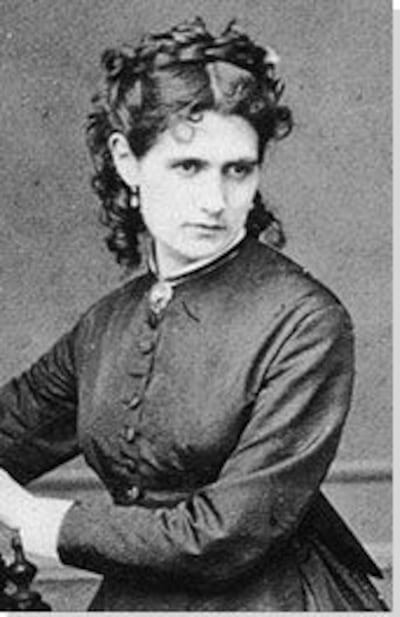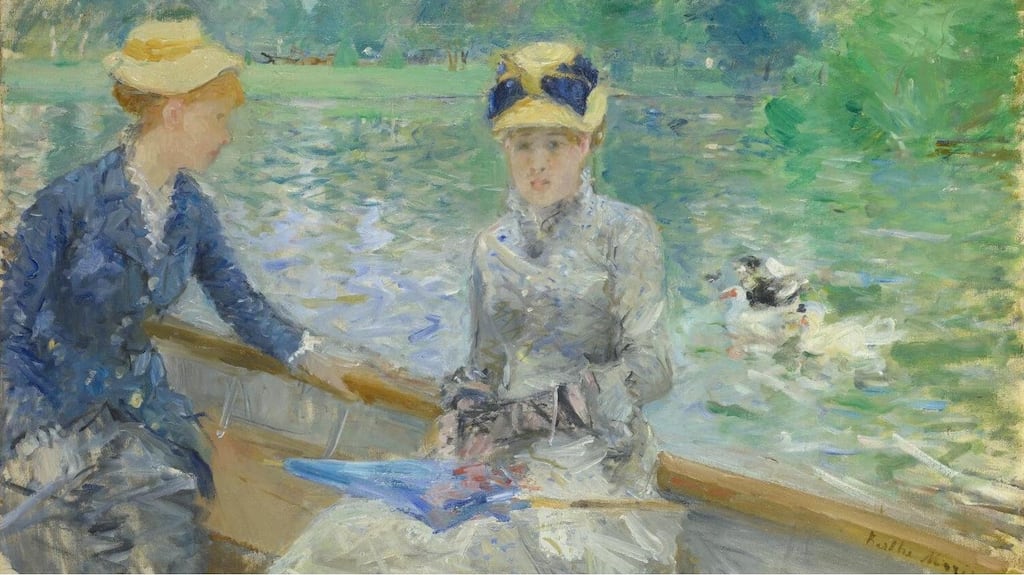What is it?
Jour d'Été or Summer's Day is a painting by Berthe Morisot (1841-1895). Painted in 1879, it was probably exhibited at the Impressionist exhibition of 1880 under the title, The Lake in the Bois de Boulogne. Modest in scale, like most of her work, at 45.7cm x 75.2cm, it is a beautifully atmospheric, close-up view of two women in a boat on the pond. It imparts a vivid sense of air and space and light.
How was it done?
Morisot was technically audacious. She is true to the airy, outdoors character of the scene – it is definitely an impression – and her exceptionally free brush strokes push representation to the edge of intelligibility, but never beyond. Admired as a colourist, she is sparing with colour and infuses every hue with quantities of white. She is a virtuoso with shades of white.
Where can I see it?
Together with outstanding works by Manet, Renoir and Pissarro, you can see Jour d'Ete at The Hugh Lane Gallery, Dublin. When Lane, then director of the National Gallery of Ireland, was killed with the sinking of the Lusitania in 1915, according to his will he left 39 paintings to The National Gallery, London.
But he had written an un-witnessed codicil – he did initial every page – to the effect that the paintings should in fact go to Dublin, where he had established the Municipal Gallery of Modern Art in 1908 (at the time in Harcourt Street). Despite numerous representations, London stood firm in claiming ownership until an initial compromise was reached in 1959. Eventually, in 1993, it was agreed that 31 of the 39 paintings would go to Ireland, the remainder – creme de la creme, needless to say – being split into two groups of four to alternate between Dublin and London every six years. So Jour d'Été and its three companions will depart these shores in less than a year-and-a-half's time.
Is it a typical work by the artist?

Yes. Morisot was born into comfortable circumstances and had formal lessons in art from a relatively early age. She became a registered copyist at the Louvre where, among others, the esteemed landscape painter Camille Corot tutored her and directed her towards plein air painting. She, in turn, persuaded Manet of the attractions of working en plein air.
Manet was a friend from 1868, though tensions understandably arose when he saw fit to “correct” a painting she’d asked him to deliver to the Salon. She was only 23 when she first exhibited at the annual Salon, switching to the Impressionists from their first show in 1874.
By then the keen eyed Impressionist dealer Durand-Ruel had already bought many of her paintings. Also in 1874 she married Manet’s brother Eugène (but continued to use her own surname). Morisot was and is rightly regarded as a central figure of Impressionism but, as with Mary Cassatt and Eva Gonzalès (to name but two others), her work was consistently treated with a certain condescension because she was a woman.
More recently, scholarship and exhibitions have contributed to correcting this inequality, but old patterns persist.











